Tweets
Two projects today: first, playing with the Atmel QTouch library, to get a sense for it. PyBadge monitoring the slider position via serial. The stair-step pattern comes from the width of the pads; if there were more overlap, it would be more continuous, but I want the 5 buttons.
(original)
Replying to @abetusk
I SO LOVED the design of the technology in that film! It was all so uncanny and unsettling, like it existed in an alternate timeline. Another inspo is “Her”, which you can love or hate, but definitely staked out a bold alternative to our usual steel-and-glass-and-holograms future
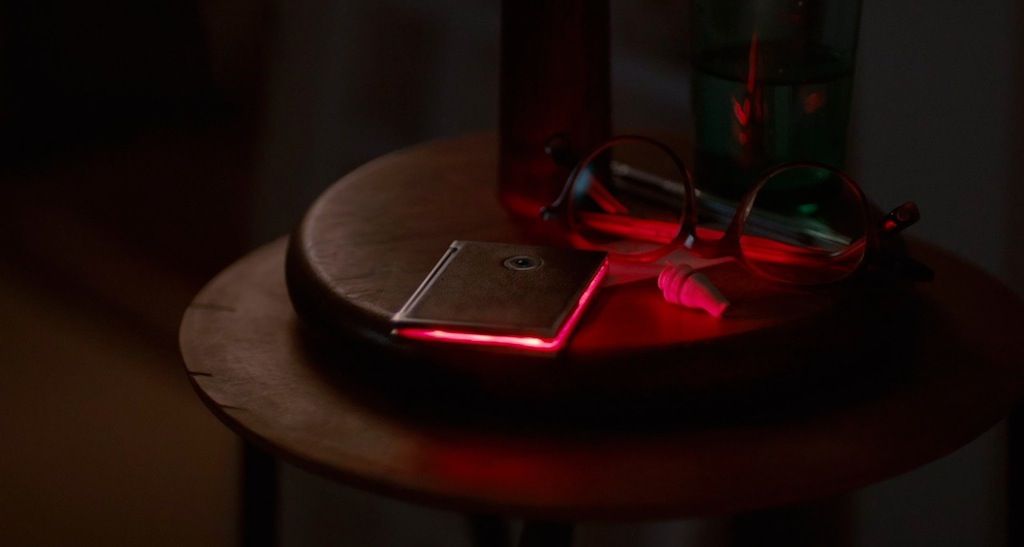
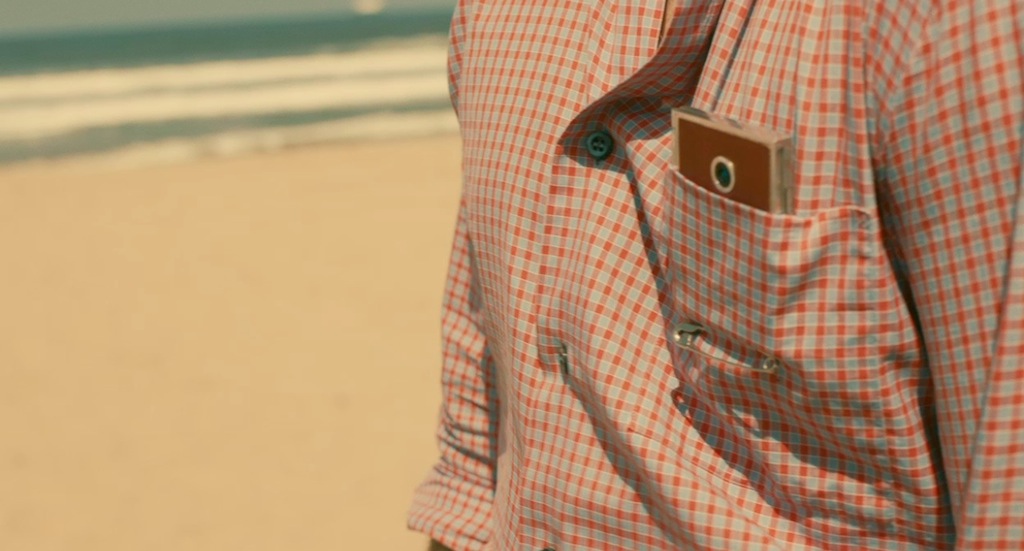
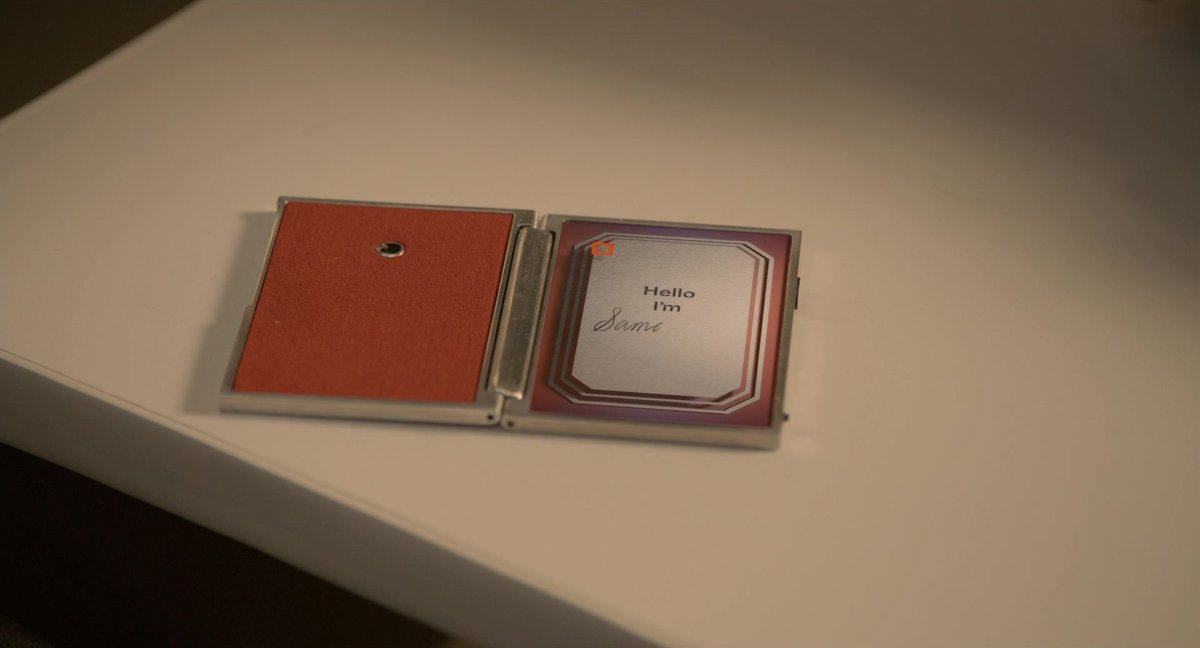
(original)
Replying to @josecastillo
(making an appearance in the post: Dutch flipback books called Dwarsliggers, medieval devotionals, victorian ettiquette guides, and Napoleon Bonaparte’s tiny library) https://twitter.com/corkcolibrary/status/421036506523107328
(original)
Replying to @JosefZvolanek
That’s very cool! I need to up my ESP32 game, seems like there’s a big community of makers doing rad stuff with it :)
(original)
This isn’t me plugging a Patreon page. I just don’t have a working blog situation at the moment, and have some notes on the Tiny Book that didn’t quite fit into a tweetstorm. https://patreon.com/posts/32980578
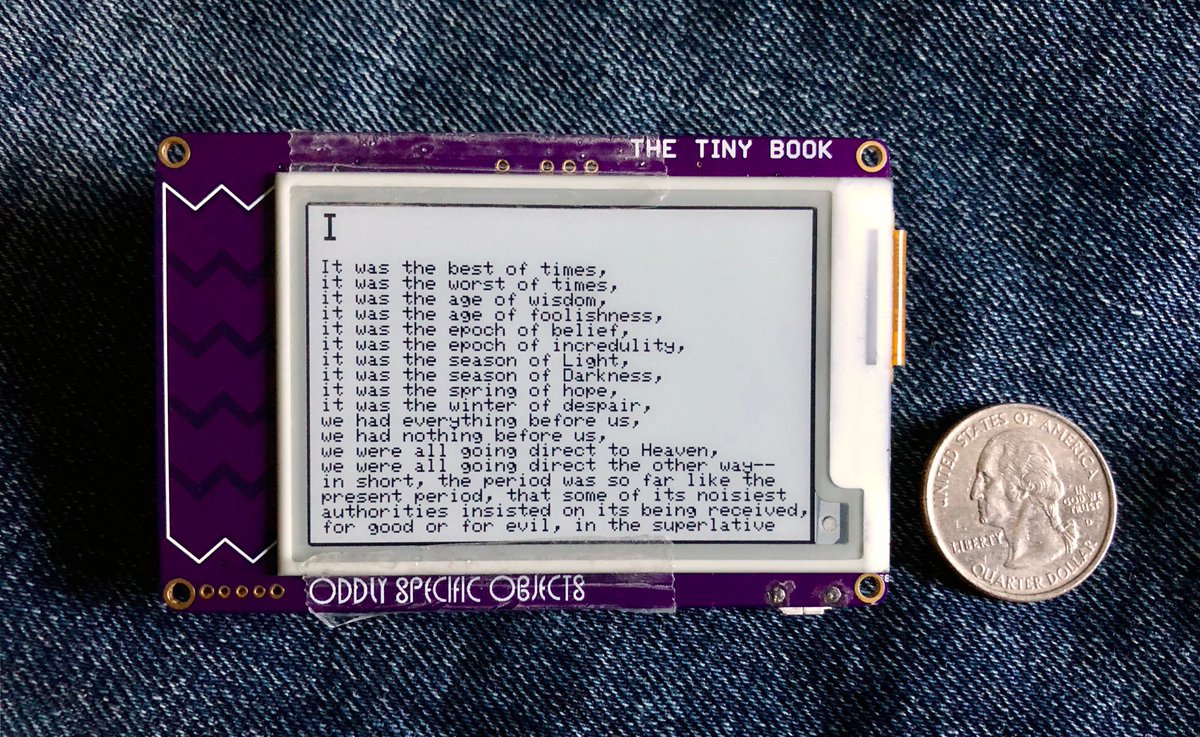
(original)
Replying to @rdcole and @adafruit
The best part: the standard Feather outline is small enough that $9 at @oshpark gets you 3 copies of your board, delivered in like a week and a half.
(original)
Replying to @Average_Maker and @arturo182
For me, a flux pen changed everything. With bridged pins you can add some flux and do kind of a sweeping motion with your iron away from the bridged spot; seems to work like magic.
(original)
Replying to @josecastillo
One more with both sides. At the time I was really into putting relevant quotations on the back of every board :)
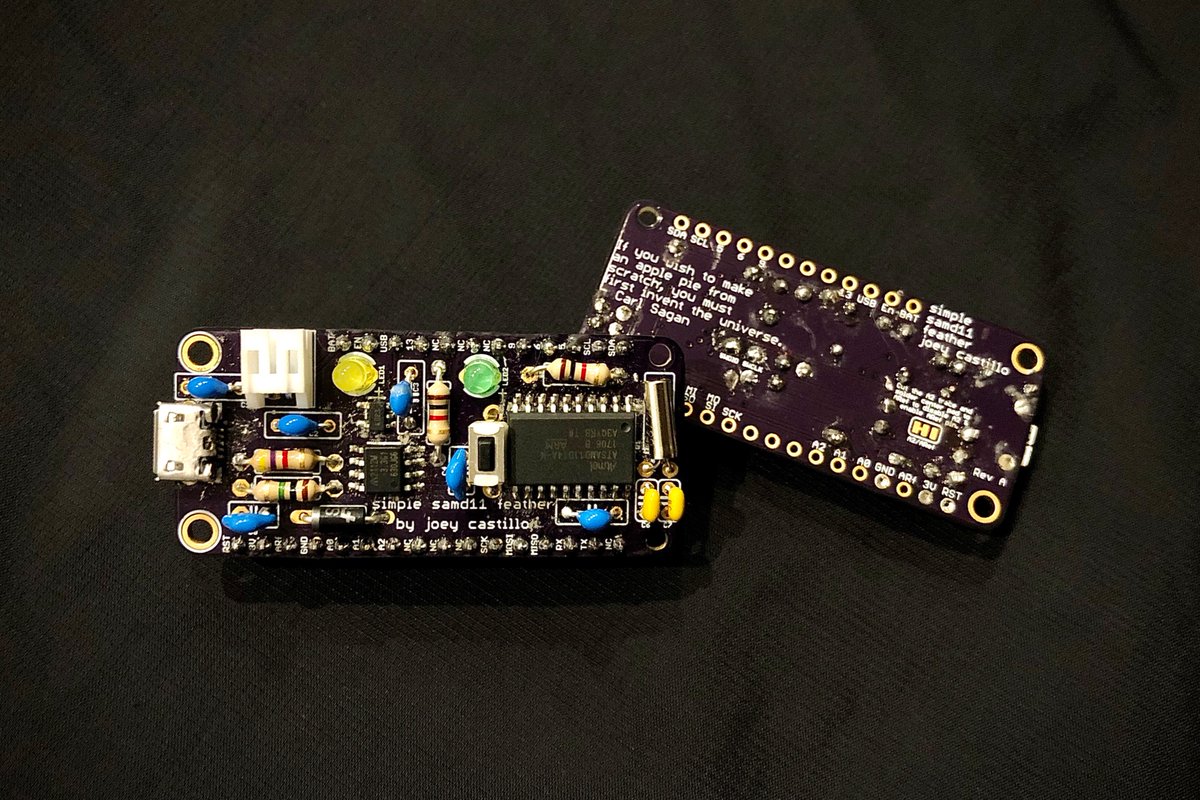
(original)
Holy crap, this board! I’d forgotten all about it, but today it surfaced while I was looking for something else. This is the first Feather I ever designed: a simple SAMD11 board with mostly thru-hole components, because as of last summer I was still afraid of surface mount parts.
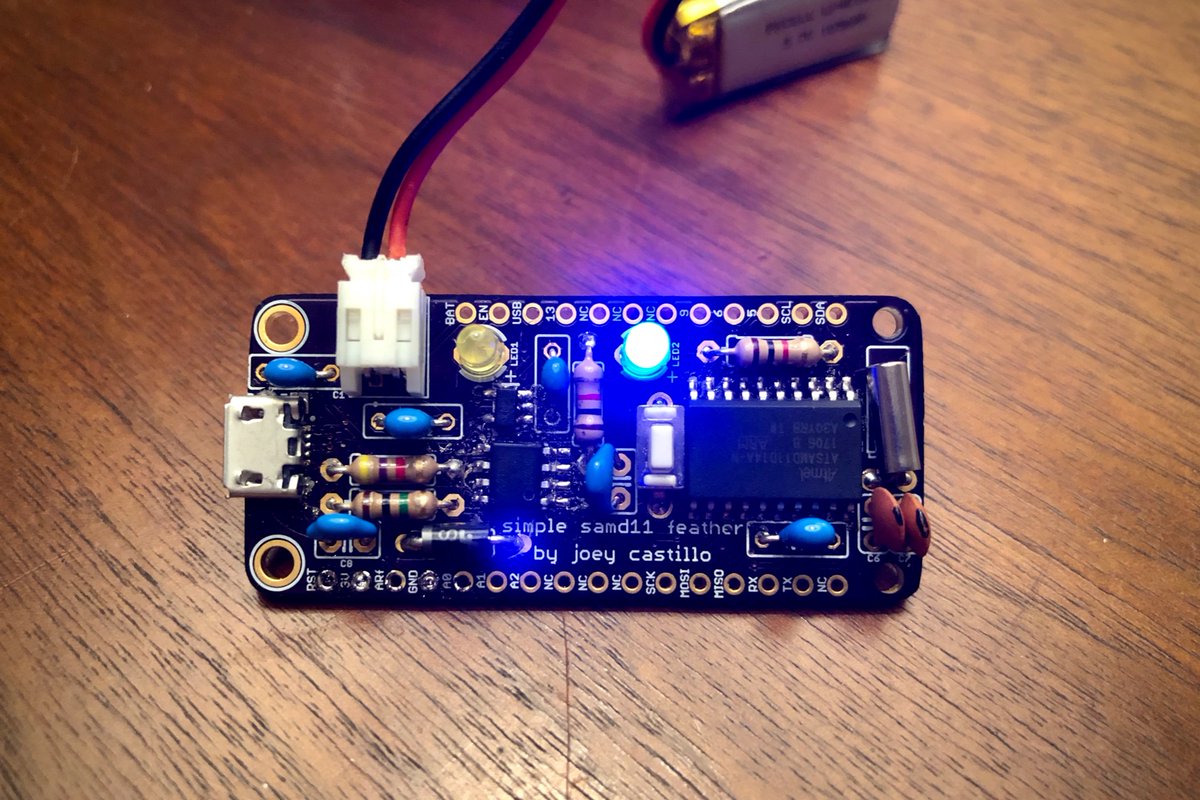
(original)
Replying to @HikingHack and @Hacksterio
I’m using the Peripheral Touch Controller on the SAMD21, via Adafruit’s FreeTouch library. The PTC has a series resistor you can select via a register, but no matter which I use the green electrode seems to float higher than the others. Maybe all I care about is the delta though?
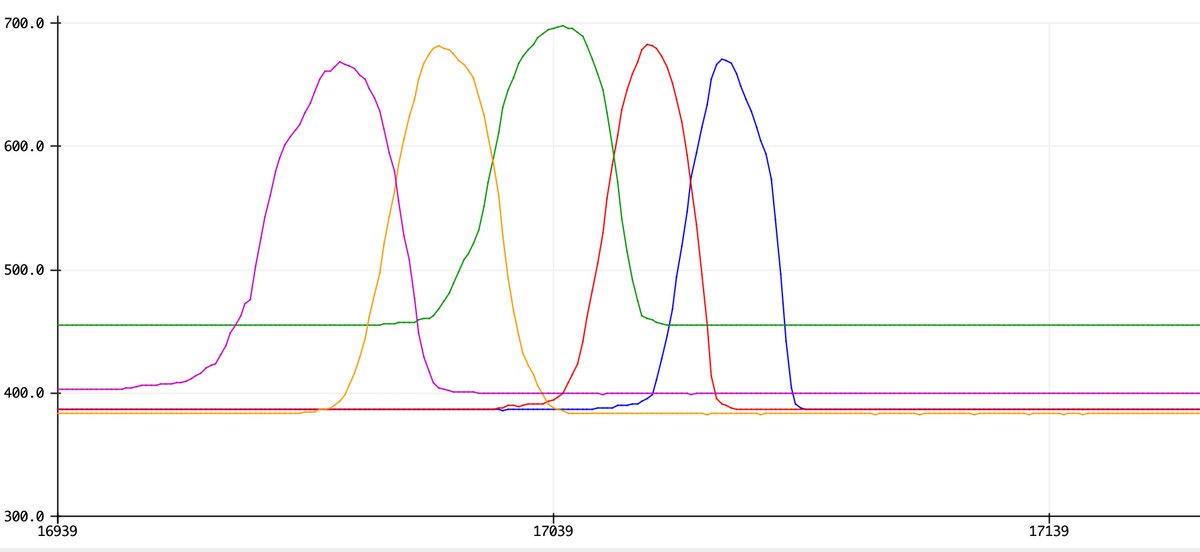
(original)
Back in NYC and waiting in a purple envelope: my capacitive touch slider! Testing with a Feather M0. I sense this may be more complex than I imagined; raw values vary from pad to pad (and when on battery vs USB?) Still, for a board with more or less zero parts, I’m pretty happy.
(original)
Replying to @WTF4Law
I sense that at first, books are just going to be plain Unicode .txt files, with a focus on CC and public domain works like Project Gutenberg. As far as management, I expect to be able to make it so you can plug the device in and its SD card will show up as an external drive.
(original)
Replying to @Dan_Halbert, @adafruit, @makeitblink42 and @tannewt
Thanks! I didn’t realize y’alls method only requires one resistor, that’s very interesting. There’s an appeal for me of using the functionality that’s already on the chip, but good to know there’s a solid alternative if I can’t crack this nut :)
(original)
Replying to @tomfleet
Thanks! And it is probably about actual size. More or less I’m playing with fitting as much of the Open Book’s functionality as possible into the tiniest space I can… sort of a low cost, smaller screen version, but still with ports and such to extend its abilities.
(original)
Replying to @makeitblink42 and @adafruit
Thanks! Your write-up in the Libre_PTC readme was really helpful in understanding how it works, gonna try and hack on it this week :)
(original)
Replying to @josecastillo
For context: I’m playing with an idea for a new board. Designed it around the SAMD21 because I need touch, and that’s where the support is. But if I can figure out the SAMD51 PTC, I could make it 20% more awesome with like minimal changes :)
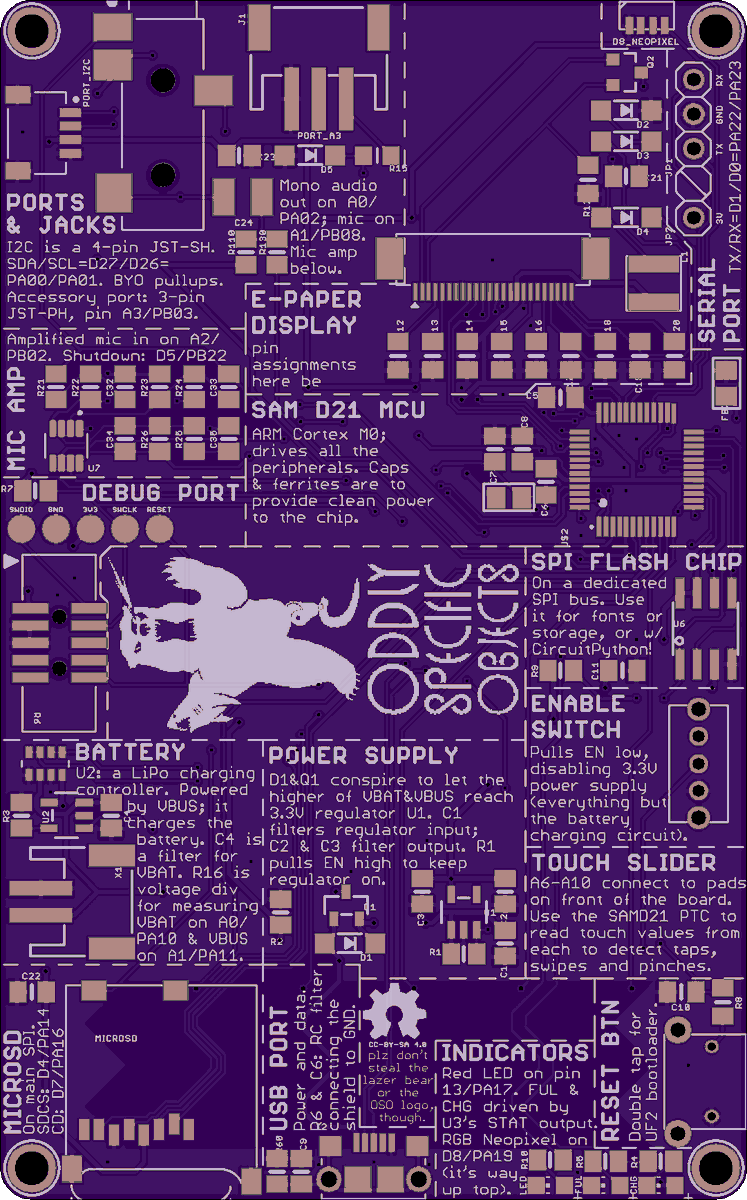
(original)
Has anyone out there hacked on an open source interface for the #SAMD51 peripheral touch controller? Any notes or guidance? @adafruit’s FreeTouch has the #SAMD21 covered, and @makeitblink42’s Libre_PTC does the #SAMD11, but I get the sense the SAMD51 is a totally different beast.
(original)
spent some time this morning updating one of my side projects, Vote For The Democrat, with the latest entrants into the race. The work I’m doing on the Open Book is important. But you know what’s more important? Voting for the Democrat this year. http://www.voteforthedemocrat.org/president/
(original)
Fuck.
(original)
Replying to @jason_sweeten
(original)
Wrote up a quick #OpenBook project log on @hackadayio; should be the last bit of work I do this decade. I’ve been hacking on A LOT of cool stuff the past few days; can’t wait to share more in the new year :) https://hackaday.io/project/168761-the-open-book-feather/log/172491-end-of-year-state-of-the-book
(original)
Replying to @Absurdev
It’s this 4.2 inch display from Good Display: https://zh-tw.buyepaper.com/42inch-e-ink-panel-spi-interface-buy-e-paper-display-p0085.html
(original)
After tweeting about refresh rates, I realized that I’d never done a side by side comparison of the different update waveforms for the #OpenBook. Menu uses the default waveform. The “quick” waveform is what I use for flipping pages of text; it feels just quick enough for reading.
(original)
Spent some time today hacking on 2-bit grayscale mode for the #OpenBook. On the one hand, I’m definitely feeling the limitations of slow refresh and low resolution. On the other hand: pretty stoked at how much functionality I’m wringing from a _really_ inexpensive e-ink panel.

(original)
Replying to @steubens7 and @jonbro
yep! I got mine from @adafruit, all 0805 sized; before I got a reflow oven, I found them easier to hand-solder than 0603. https://www.adafruit.com/product/441
(original)
Time-lapse of this afternoon’s #OpenBook build. I’m getting better at this; from fiberglass and solder paste to working gadget in just over an hour.
(original)
Assembling one last board at @the_prepared before I head to Texas for the holidays; realizing this is by far the most prepared I’ve ever been for a build.
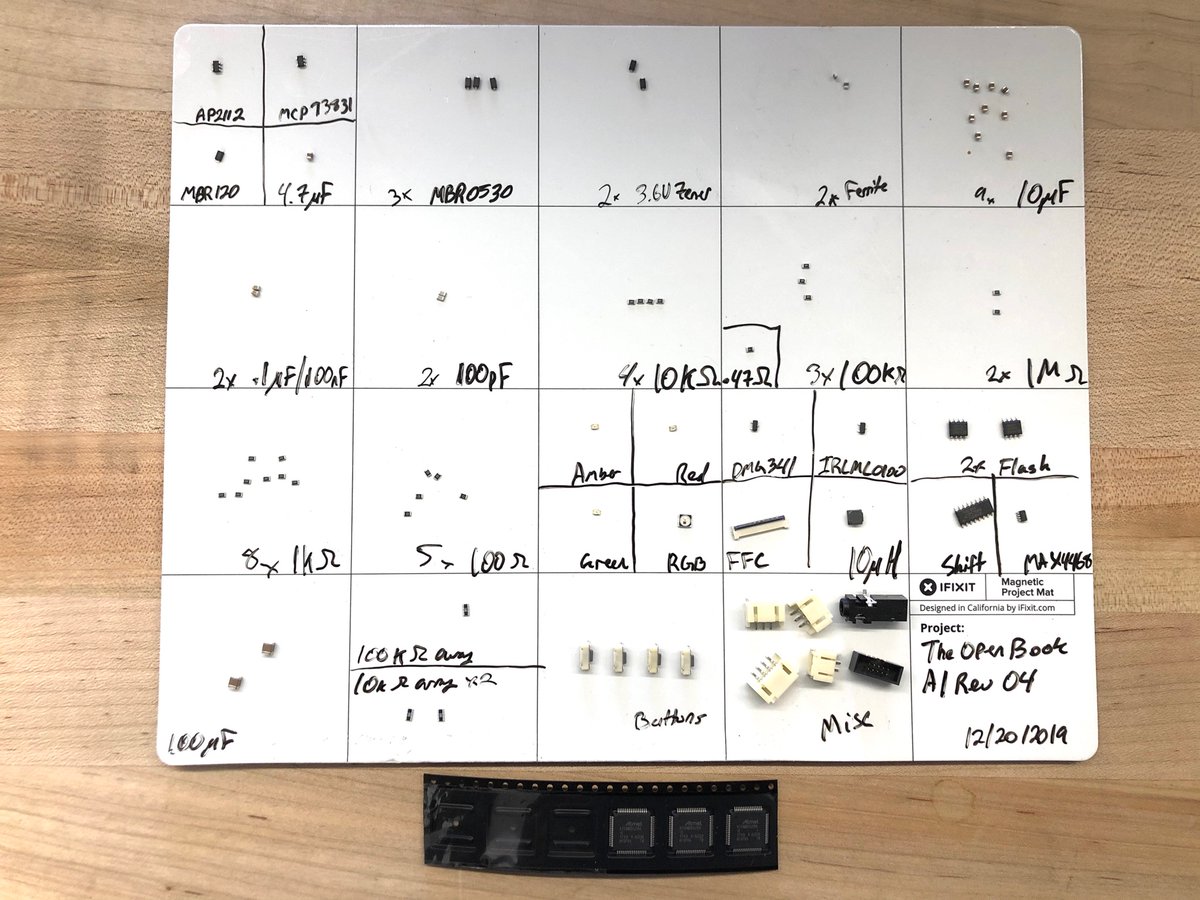
(original)
Replying to @josecastillo
If we’re still doing categories, I think I’m going for The Weirdest Feather. The goal (a DIY Kindle) feels crazy. The style (Dr. Bronner meets Instructables?) feels unique. And it’s kind of an odd yet focused set of peripherals, that I think folks could hack into some wild stuff.
(original)
Replying to @josecastillo
Finally, this isn’t a change, but just something I noticed working with the microscope: @oshpark absolutely SLAYED it with the silkscreen this time. Like, I’m going to need to move from bitmap to vector art for the lazer bear, because look at the resolution on that text! (5/5)
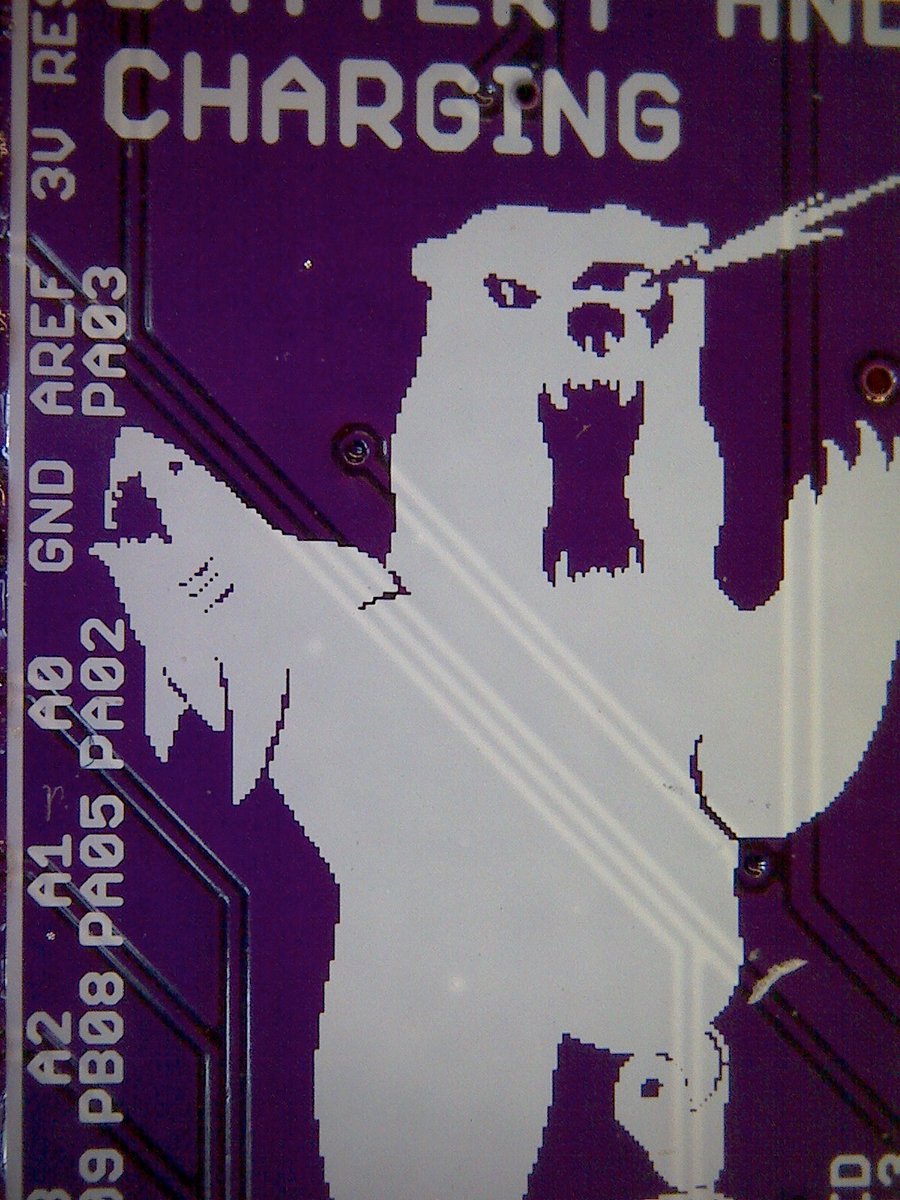
(original)
Replying to @josecastillo
Next up, down at the bottom. The MAX4466 mic preamp is now a MAX4468. 10¢ more, but it has a shutdown pin if you wanna turn it off for power (or privacy) reasons. I mean, it doesn’t do anything unless a headset is plugged in anyway; it’s microamps, but still why waste them? (4/5)
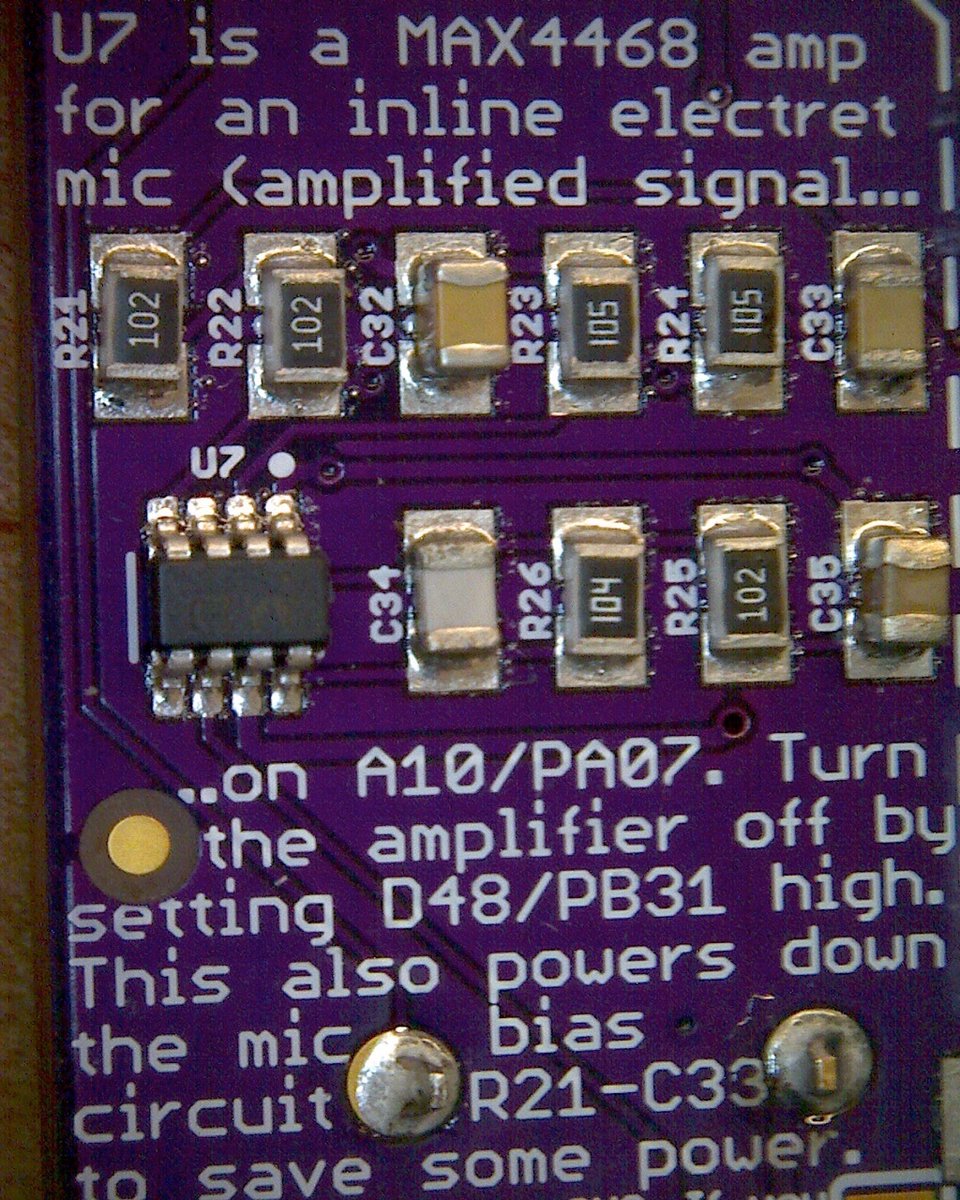
(original)
Replying to @josecastillo
In the same block, creature comforts: as it turns out, the MCP73831 I’m using to charge the battery? It supports three output states on the STAT pin. So I added a second LED: a green FUL indicator next to CHG, that lights when the battery is fully charged. (2/5)
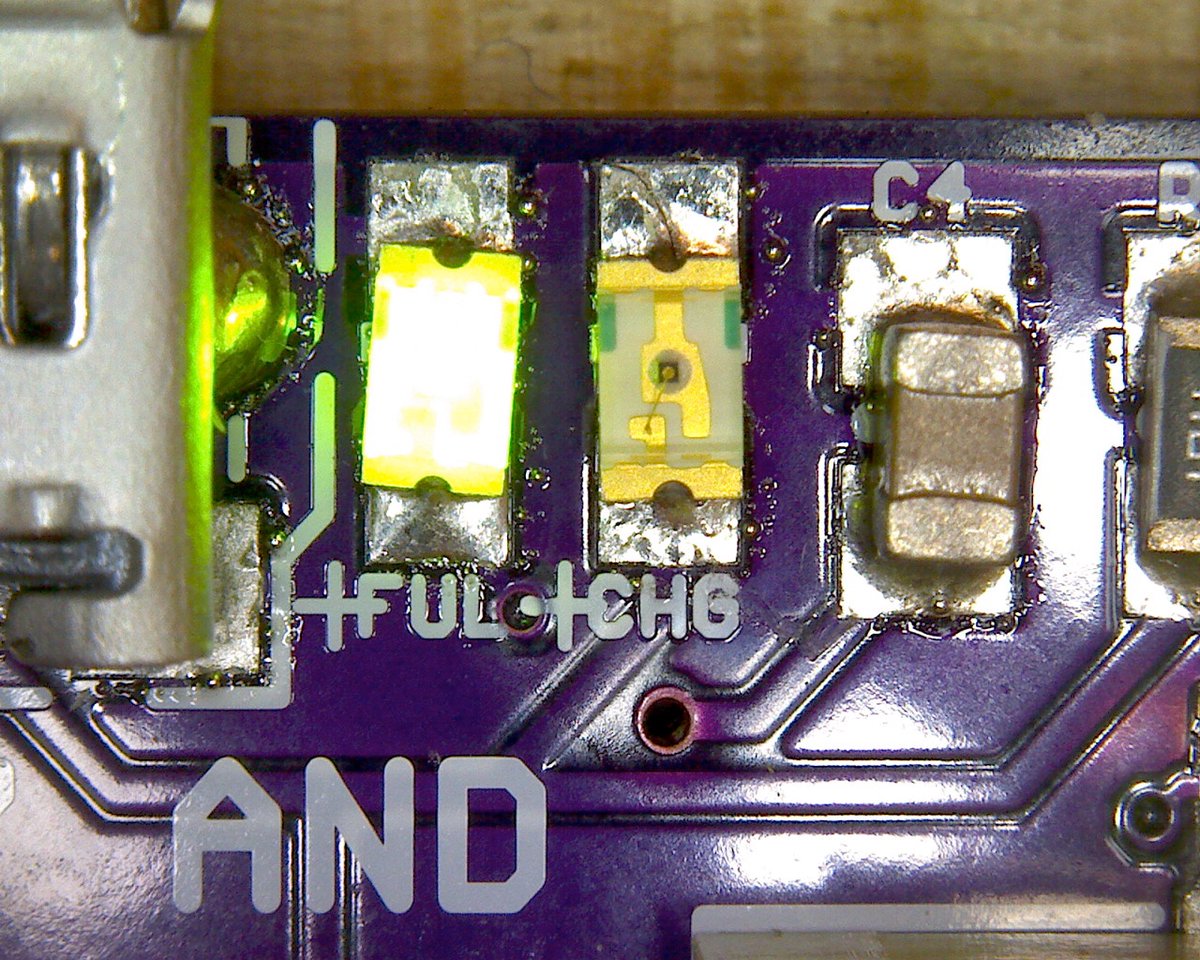
(original)
Replying to @josecastillo
First up: I removed the screen buffer SRAM chip, which freed up two pins on the #SAMD51. One, I used to add a second voltage monitor: now we can watch VBAT for power level, and VBUS to see when we’re plugged in, via this handy resistor array / pair of voltage dividers. (2/5)
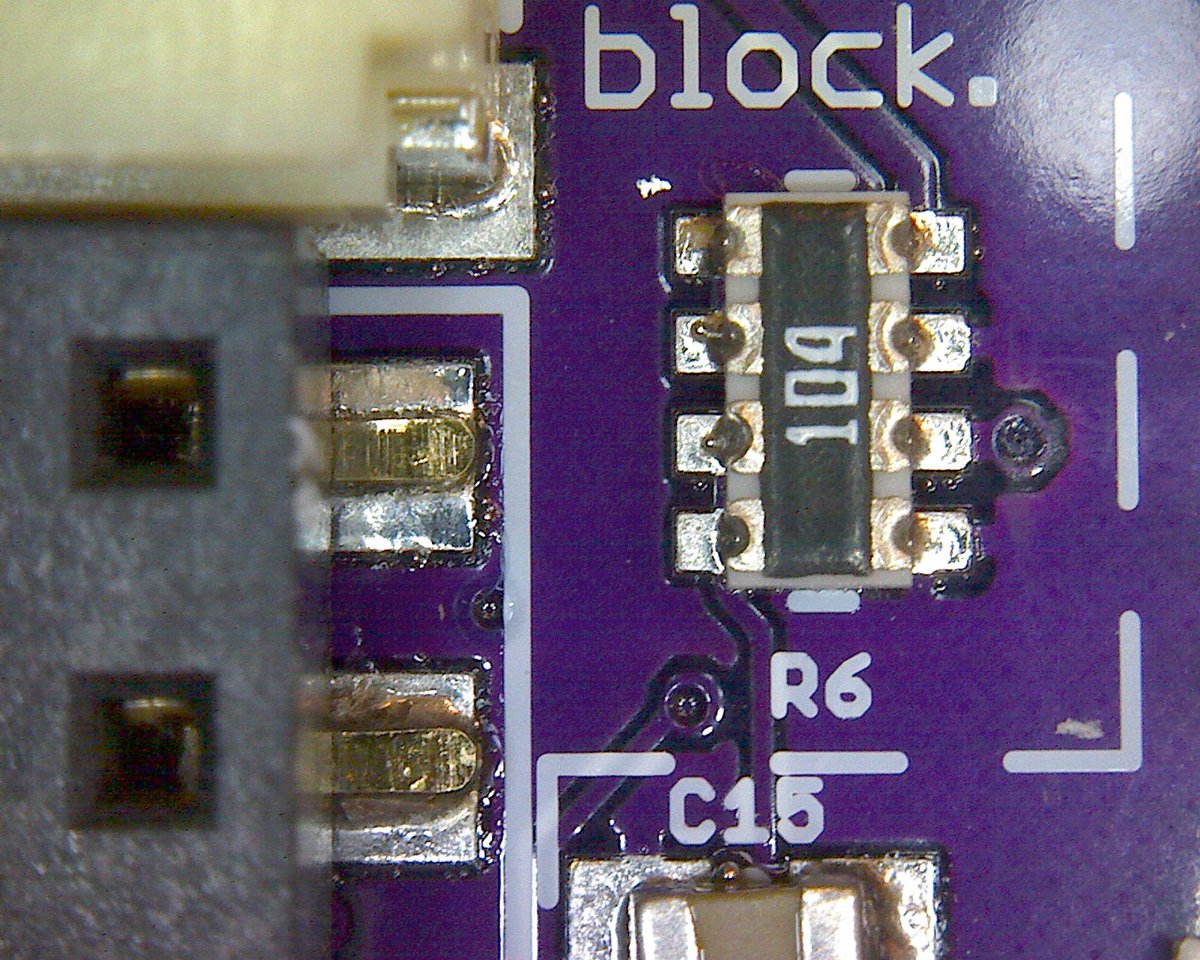
(original)
YES!!! This is the final revision of the Open Book, and my final submission to @adafruit’s Take Flight with Feather contest. The changes from the last version are small. So small, it makes sense to look at them with a microscope. (1/5)
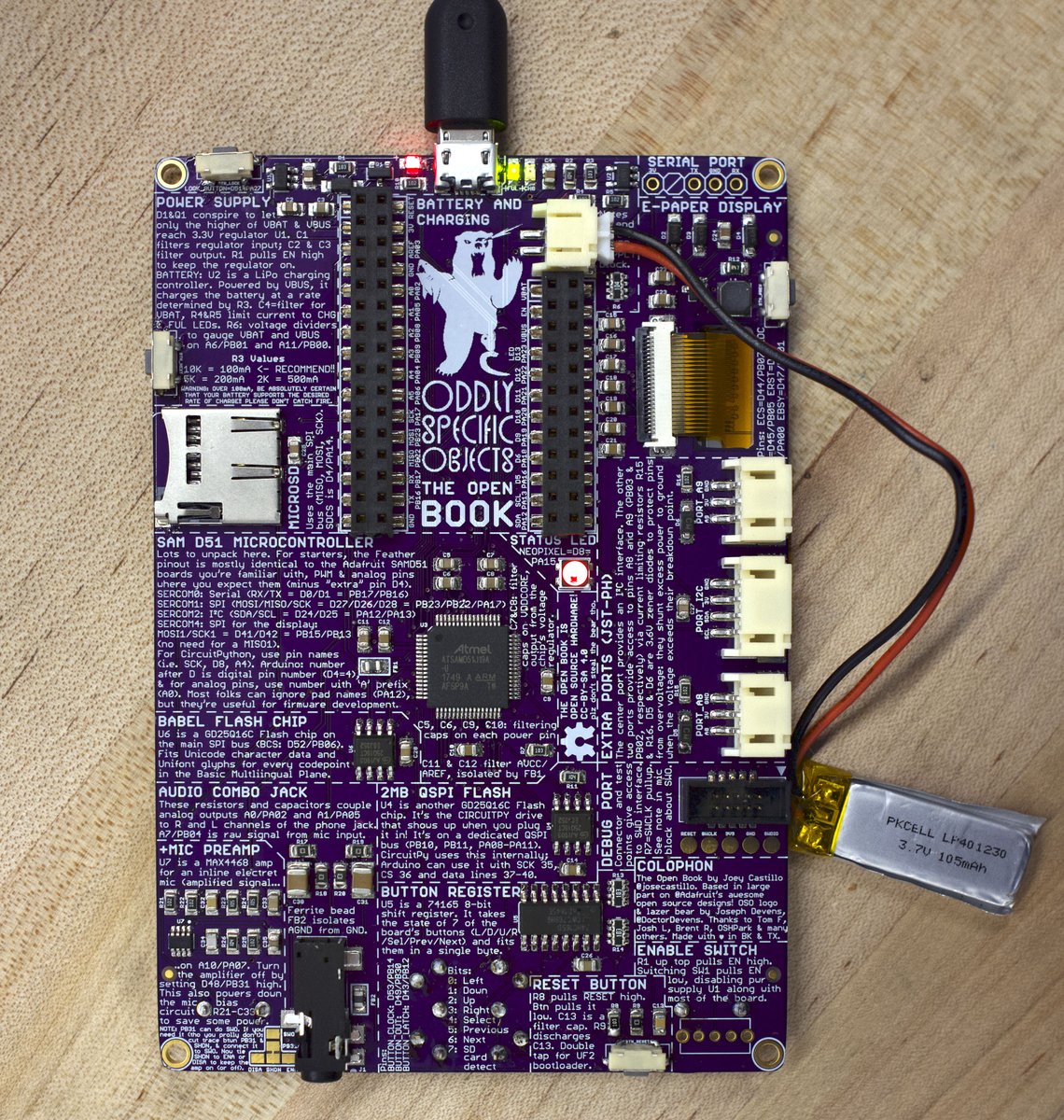
(original)
Replying to @adafruit
It’s not perfect; you can hear where it has trouble with “left”; still I expect to see a lot of advances in this area! For more on training new models check this guide: https://learn.adafruit.com/how-to-train-new-tensorflow-lite-micro-speech-models?view=all, and Ladyada has some rad thoughts on where this is all headed: https://spectrum.ieee.org/geek-life/hands-on/machine-learning-thats-light-enough-for-an-arduino
(original)
Voice commands on the #OpenBook with #TensorFlowLite. When I added a mic amp for voice, I considered this a “someday” feature; I didn’t imagine one could hack it together in an evening! Major credit to @adafruit; their TFL Arduino port makes this possible. https://github.com/joeycastillo/The-Open-Book/tree/master/Examples/Open_Book_Heart_Of_Darkness_TensorFlow
(original)
The 3D printed #OpenBook enclosure was cool and all, but this is definitely more the vibe I’m going for. Laser-cut birchwood on front and back, with nylon screws and nuts for support. And yep, you can still fit a #FeatherWing on the back; mounts a bit flush but totally workable.
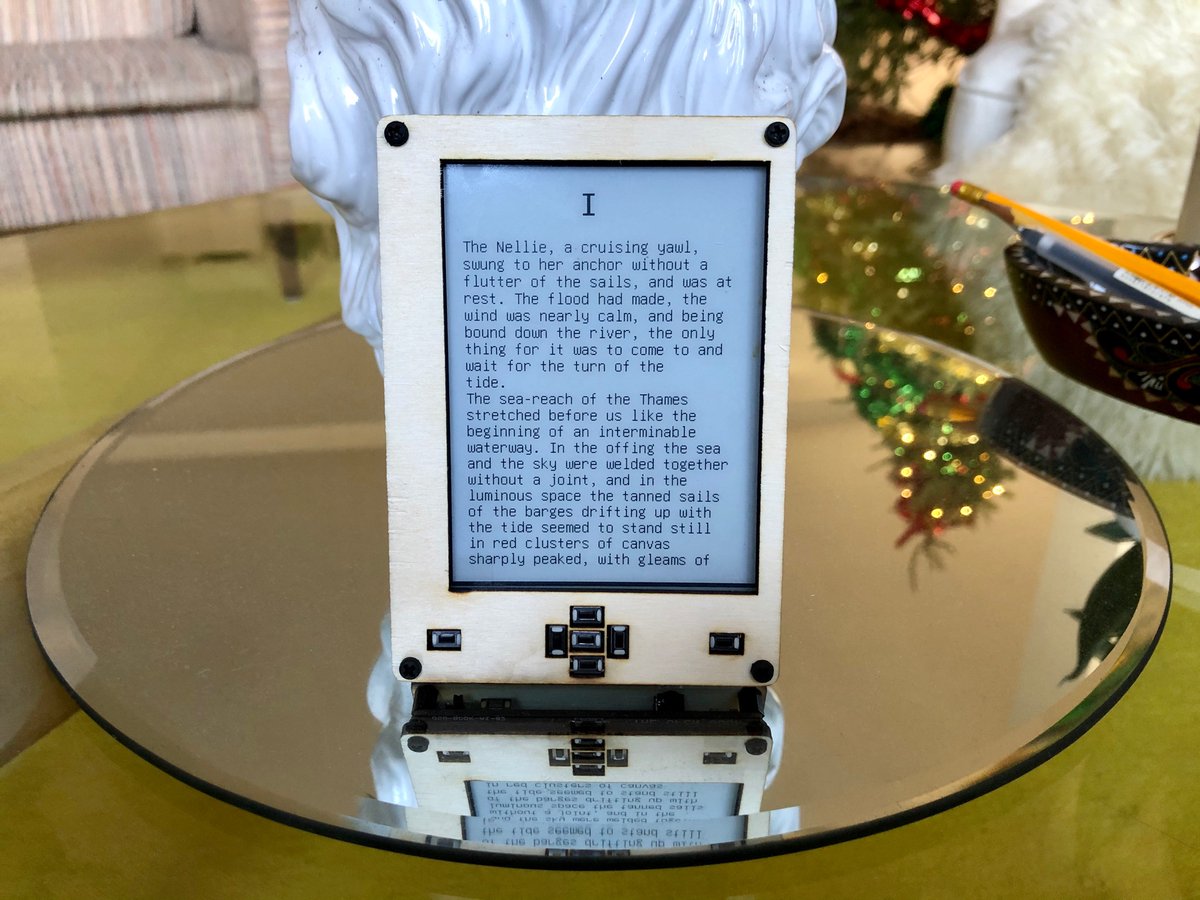
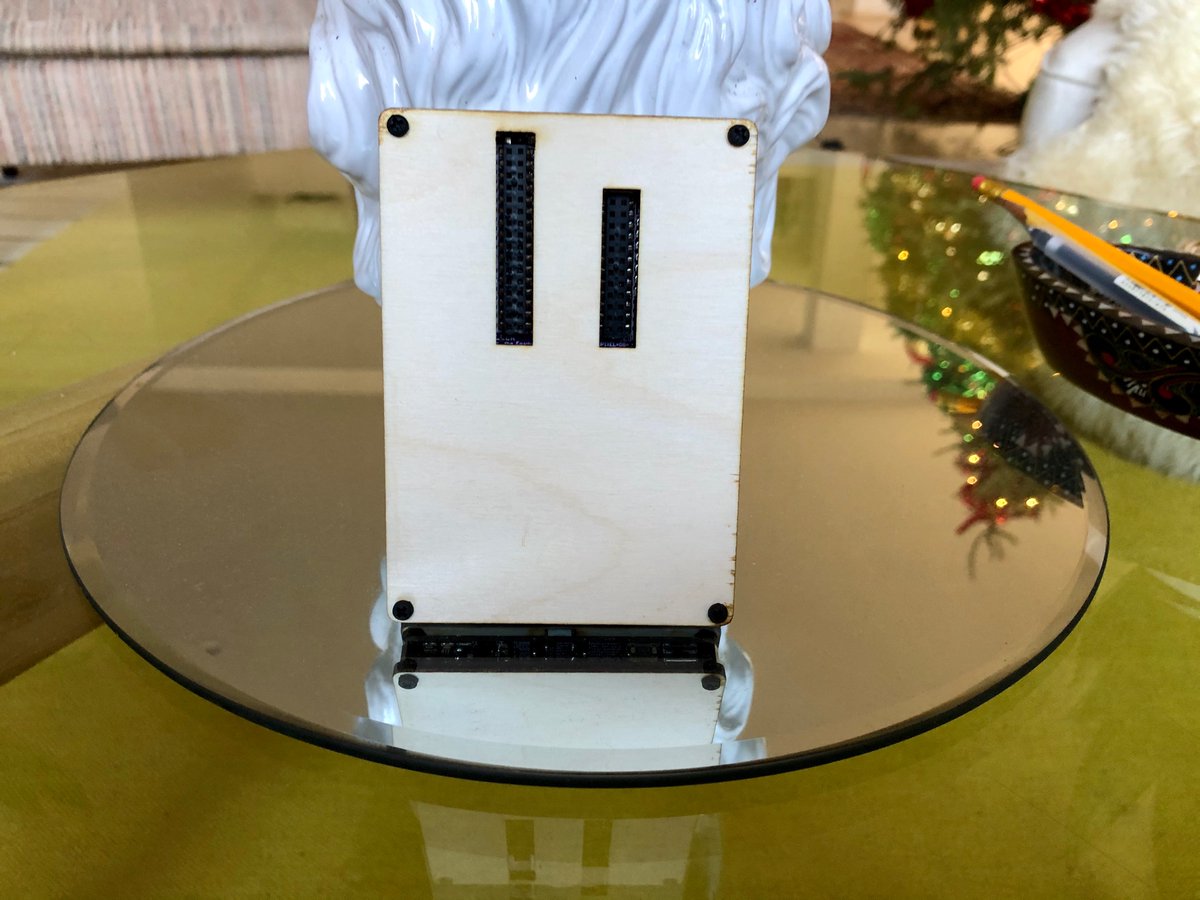
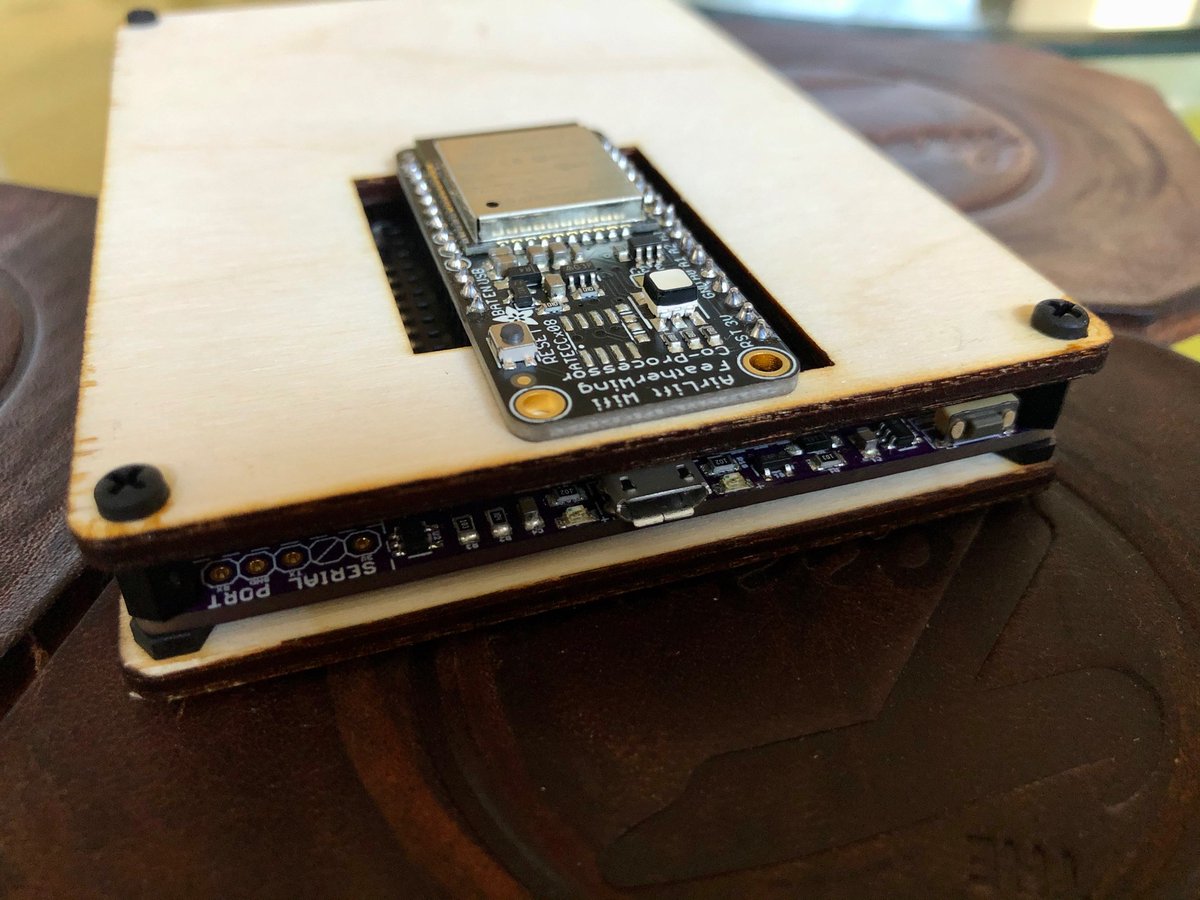
(original)
Had to wait for a UPS delivery today to validate a footprint before ordering Rev 4. Kept waiting so long that I conceived, designed, placed and routed an entirely new board. Tossed it on tonight’s @oshpark order; could be a thing. Blacked out the name, but you can prolly guess :)
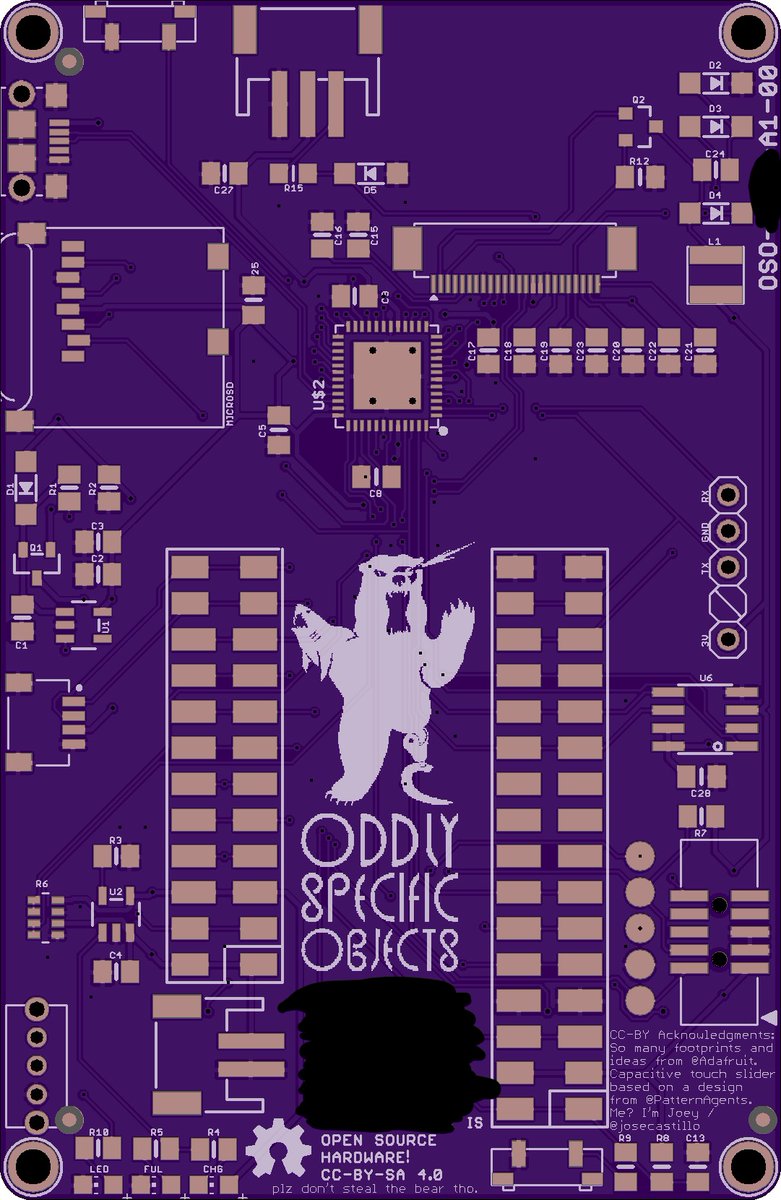
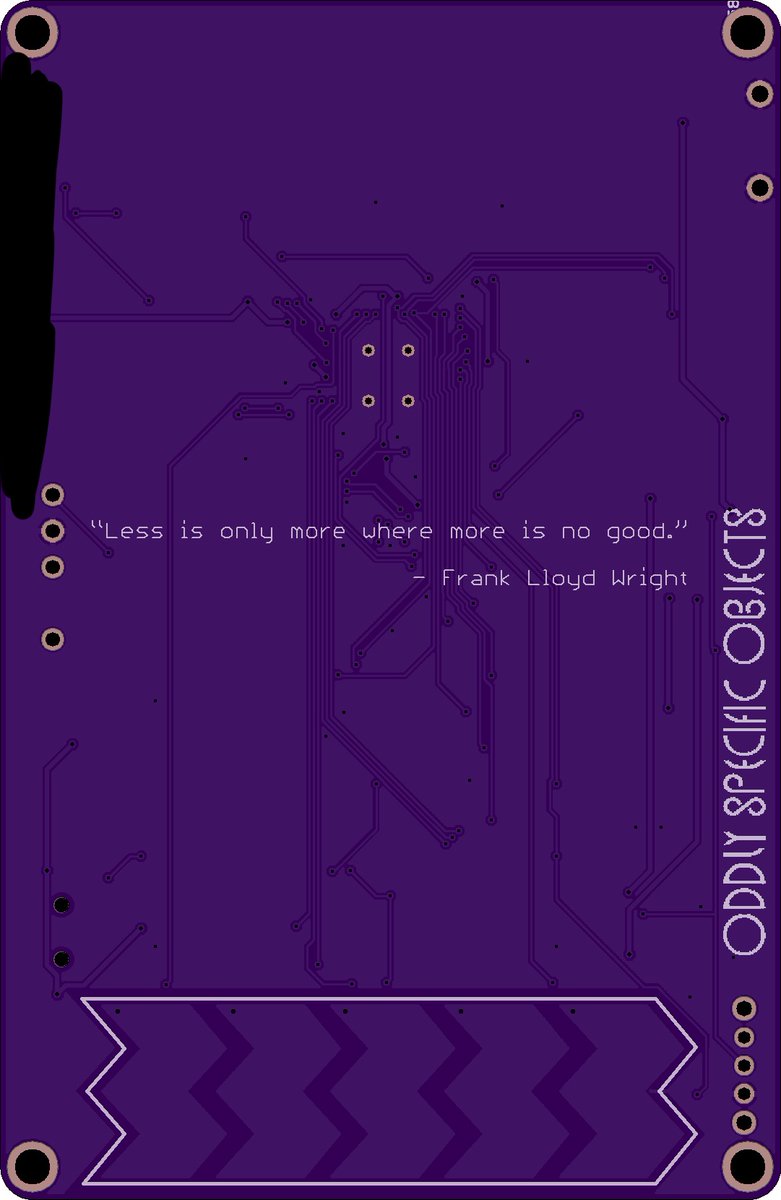
(original)
Now we’re cooking with gas! Half of a 3D printed enclosure for the book, held together with nylon screws and nuts. Back side should be easy; I just want to laser cut a sheet of clear acrylic so the explanatory silkscreen can show through.
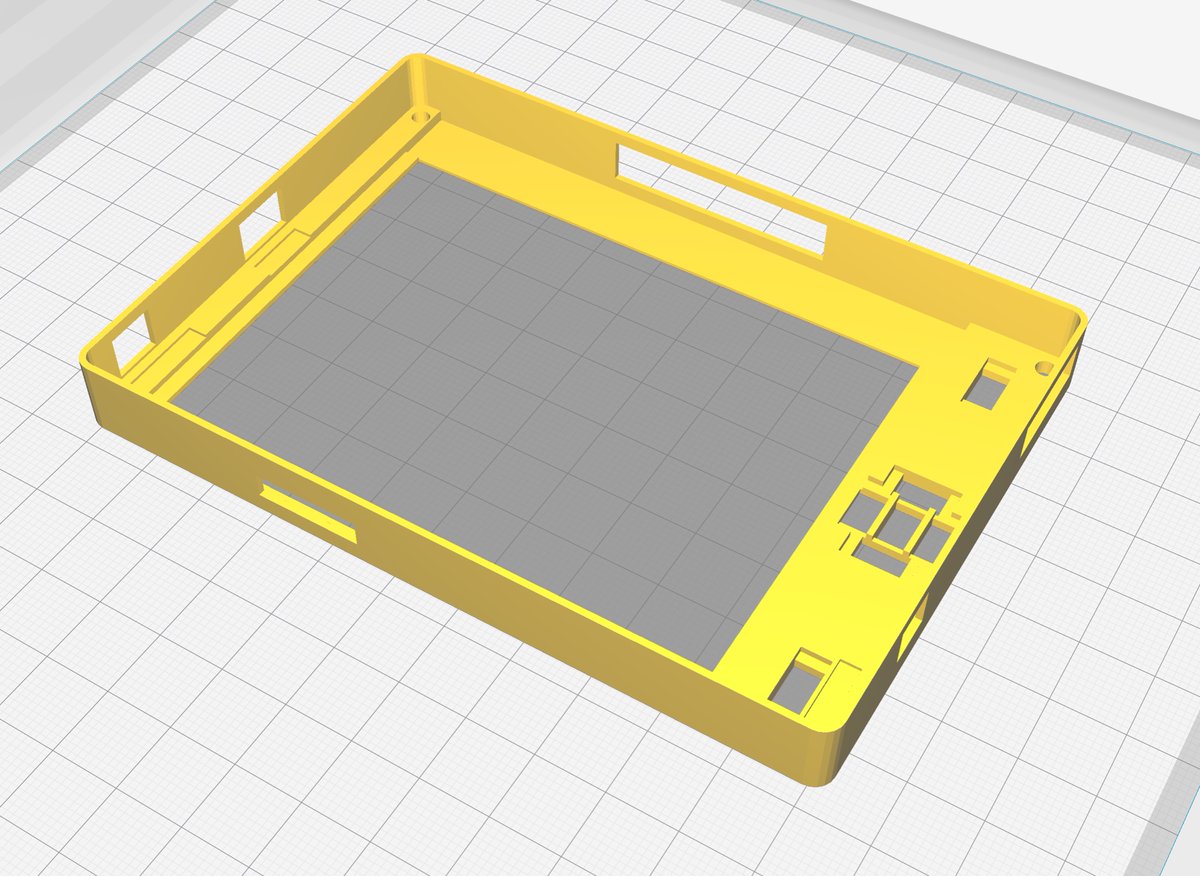
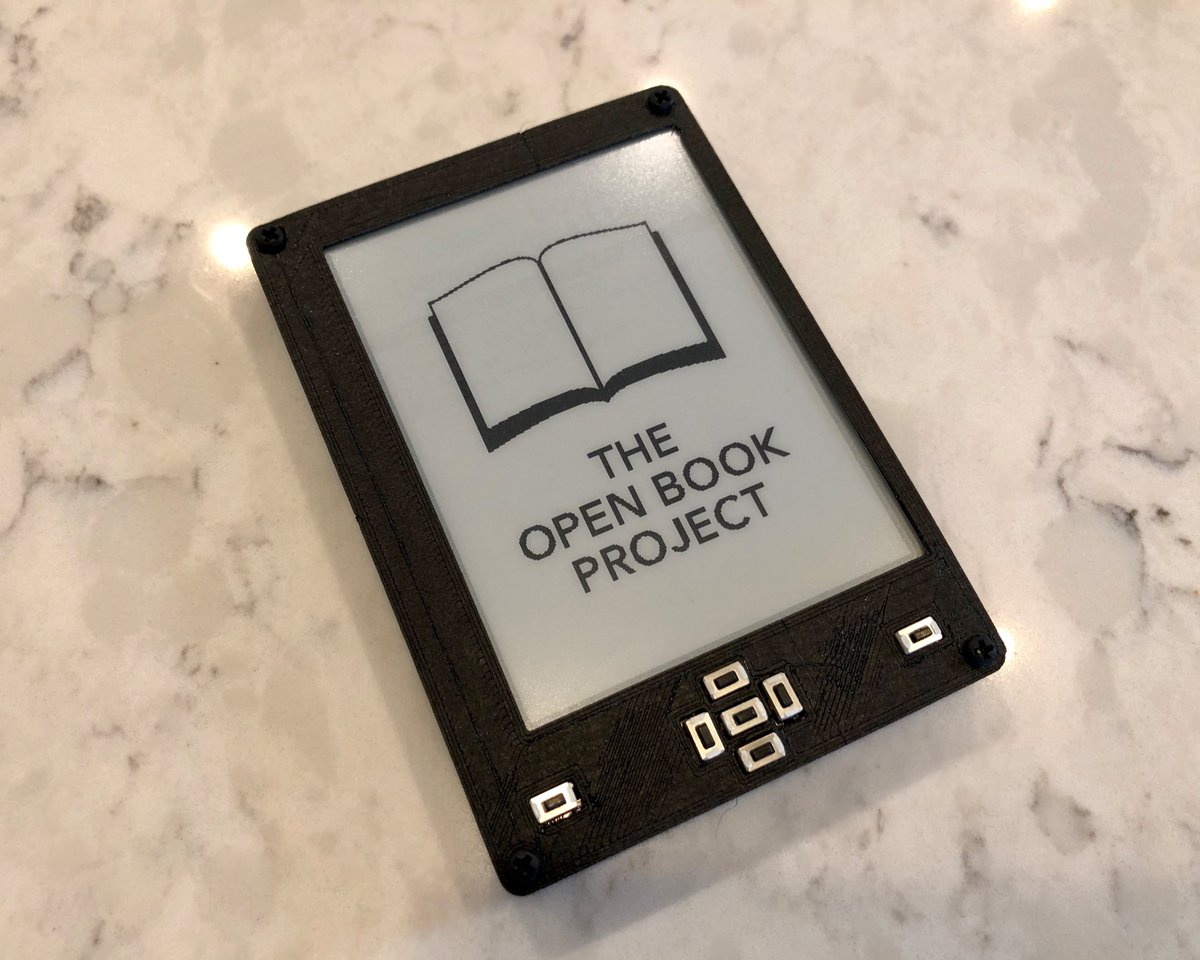
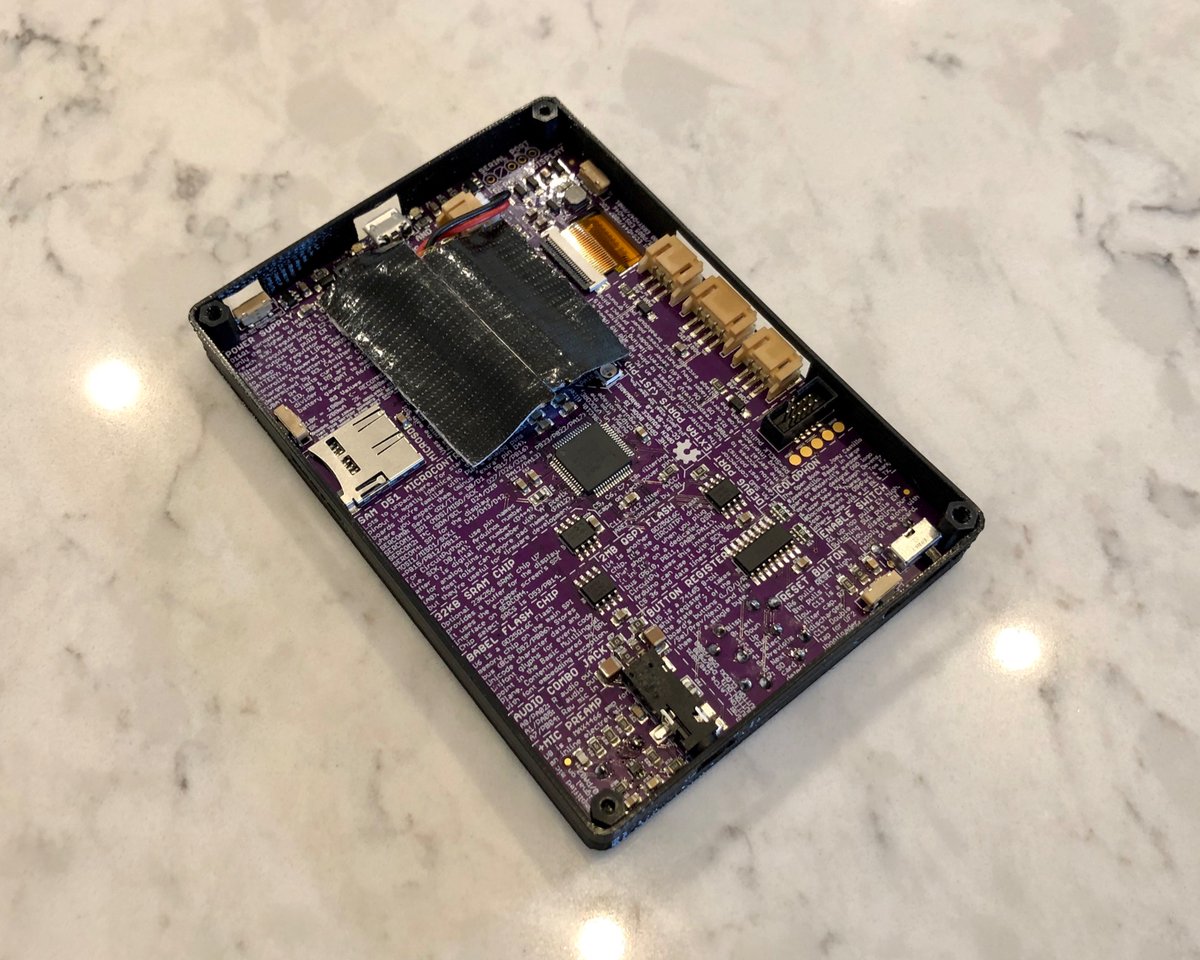
(original)
Replying to @jnesselr
I mean, that number is just the raw parts; there’s still the cost of manufacturing (which I don’t know) and some kind of markup to justify doing the thing. But if you wanted to build some yourself, that would be about what to expect, barring some kind of trade war or something 😬
(original)
Replying to @jnesselr
Did a breakdown here; not counting today’s changes (which amount to maybe about $1): $53.02 each @ 10 units or $40.01 @ 100. The Feather headers remain a frustratingly high part of that though; if you omit them, it goes down to $45.58 @ 10 or $33.90 @ 100. https://github.com/joeycastillo/The-Open-Book#open-book-feather
(original)
I’m doing one last rev of the book. Realized I could remove a $1.11 chip, and use the savings for a few nice-to-haves: a green “Battery Charged” LED and a voltage monitor on VBUS (pennies), and a mic amp with a shutdown feature (+10¢). Also made this oddly specific solder jumper:
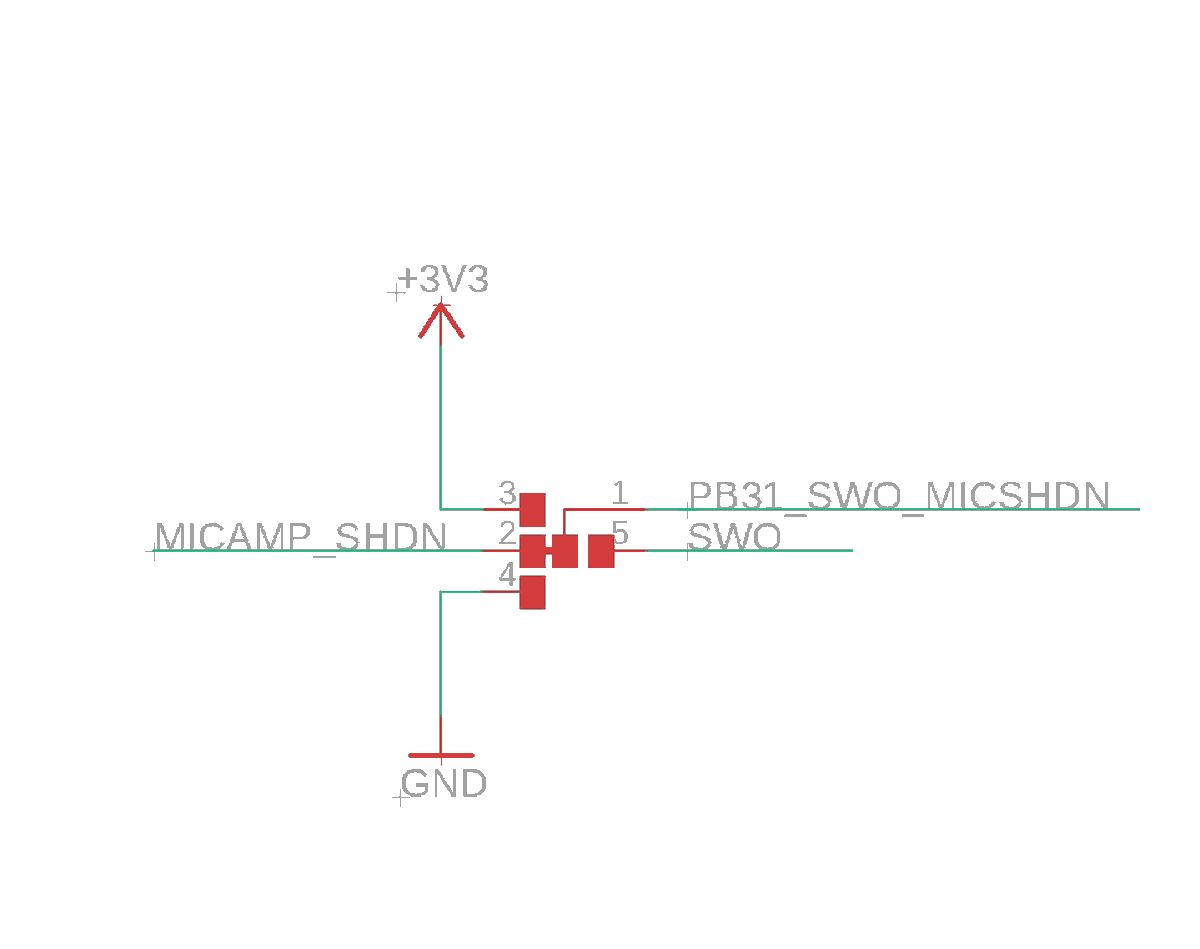
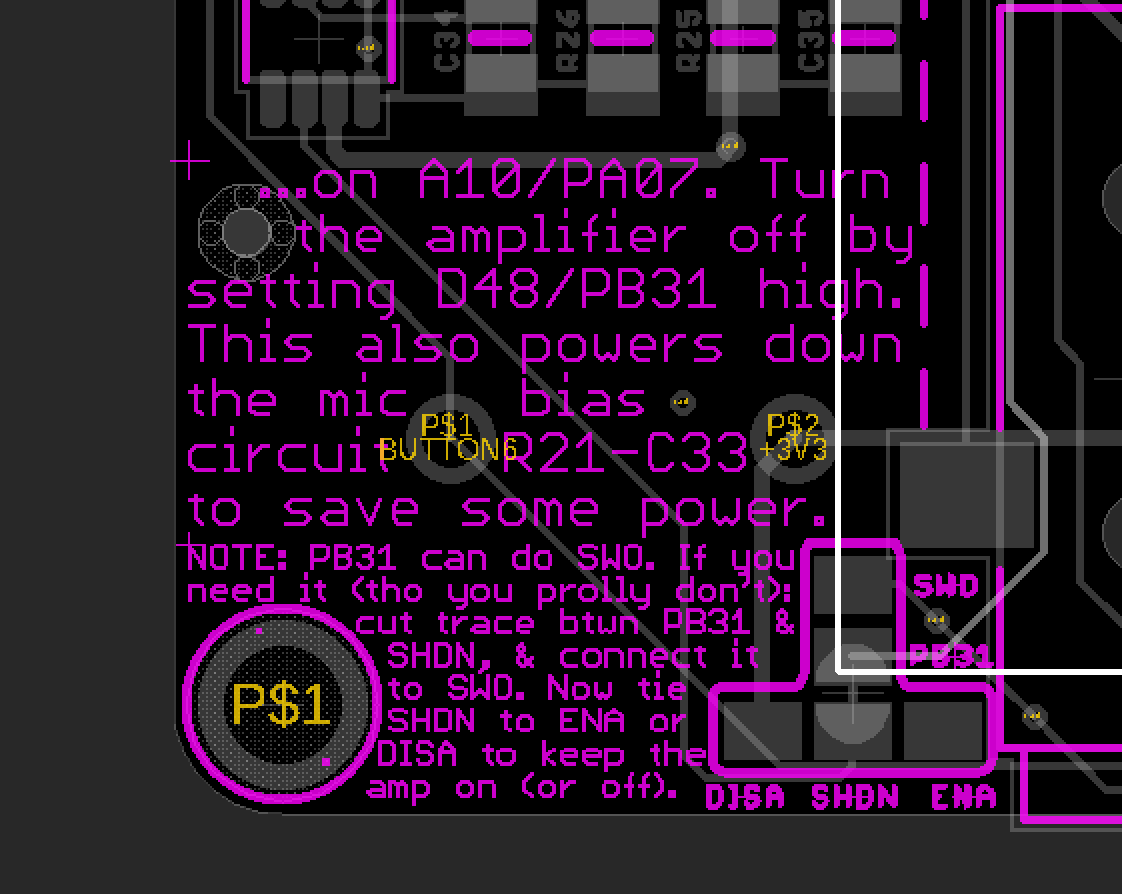
(original)
Replying to @emilesnyder
Thank you! I’m definitely down to do larger board runs and sell the PCB at cost. The fully assembled boards take a little too much time for me to want to sell though, at least until I figure out the manufacturing piece, which is a project for after the holidays.
(original)
Interested in news of the book? I’m going to try to hop on the @Adafruit show and tell at 7:30 eastern, in just over two hours’ time. Let’s see how much of this demo I can get through in two minutes :) https://youtu.be/phtM7B0MXtc
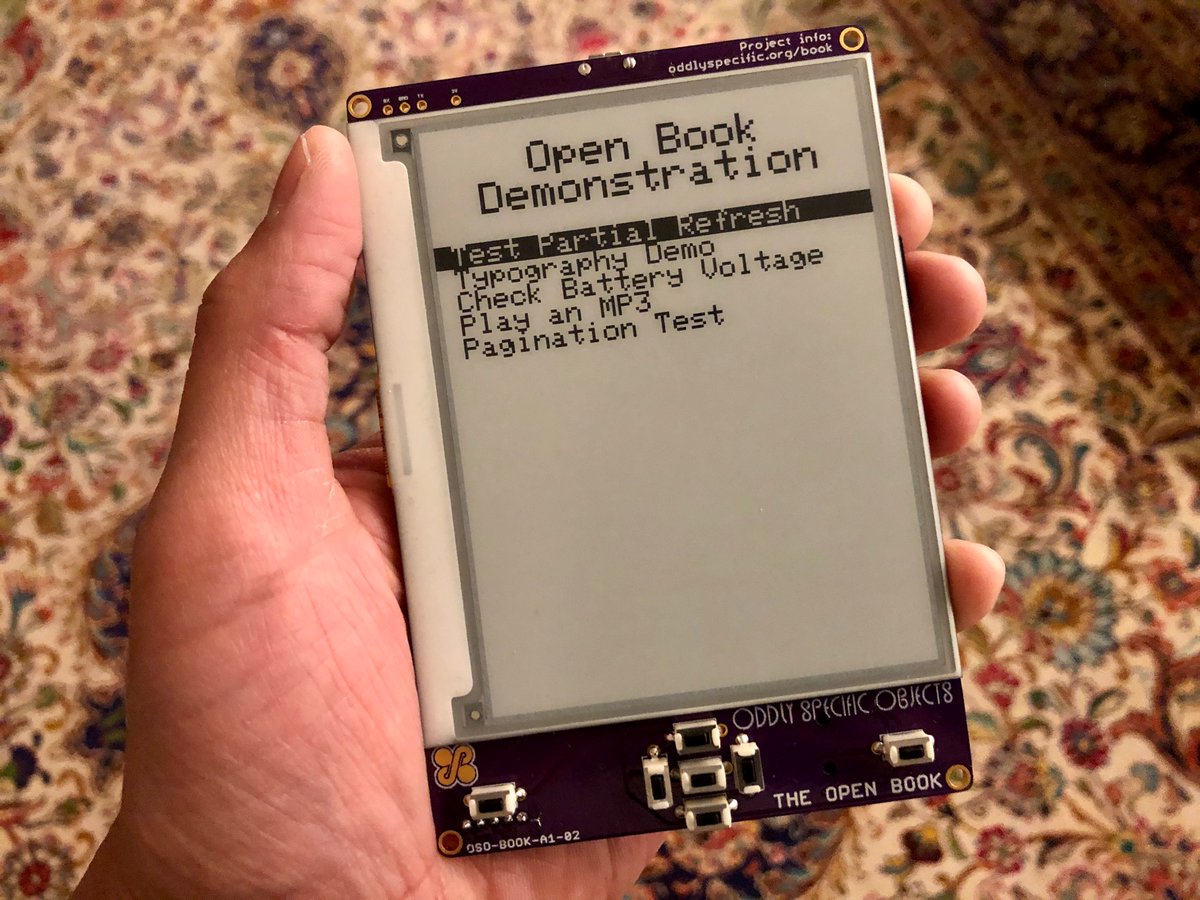
(original)
Replying to @josecastillo
incidentally, Hackaday’s image upload feature accepted some hilariously oversized board shots, so if you want more detail on that silkscreen, here’s 21 megapixels worth: https://cdn.hackaday.io/images/9562961575408621144.jpg
(original)
Finally submitted the Open Book to Hackaday for the Take Flight with Feather contest. Bit of a balancing act; had to stop hacking on it for just long enough to write a summary and take some photos. https://hackaday.io/project/168761-the-open-book-feather
(original)
Replying to @reportingsjr and @BenKrasnow
Ha yep that’s where I learned 90% of what I put into that gist :)
(original)
In a quest for faster refresh rates, delved today into the dark arts of e-ink lookup tables. Turns out, not that dark, just arcane and poorly documented. Driver is a work in progress, but pasted some notes here; I sense folks might find them useful: https://gist.github.com/joeycastillo/4cad38cc8e5cb3d5010265bc1bbd92ba
(original)
Replying to @adafruit
Finally, I love this bit: the front of the PCB now contains detailed step-by-step instructions on how to assemble the book. Final step: “If you see the screen refresh, you’re done! Secure the screen to this area with double sided tape; you don’t need this documentation anymore.”
(original)
Replying to @adafruit
Fixed a design error by adding a pair of resistor arrays by the button register, and added a Mic Preamp block to make use of a headset’s inline mic, bc I like the idea of voice commands as an accessibility feature. Optional, but the pads are there if you find it useful. (5/?)
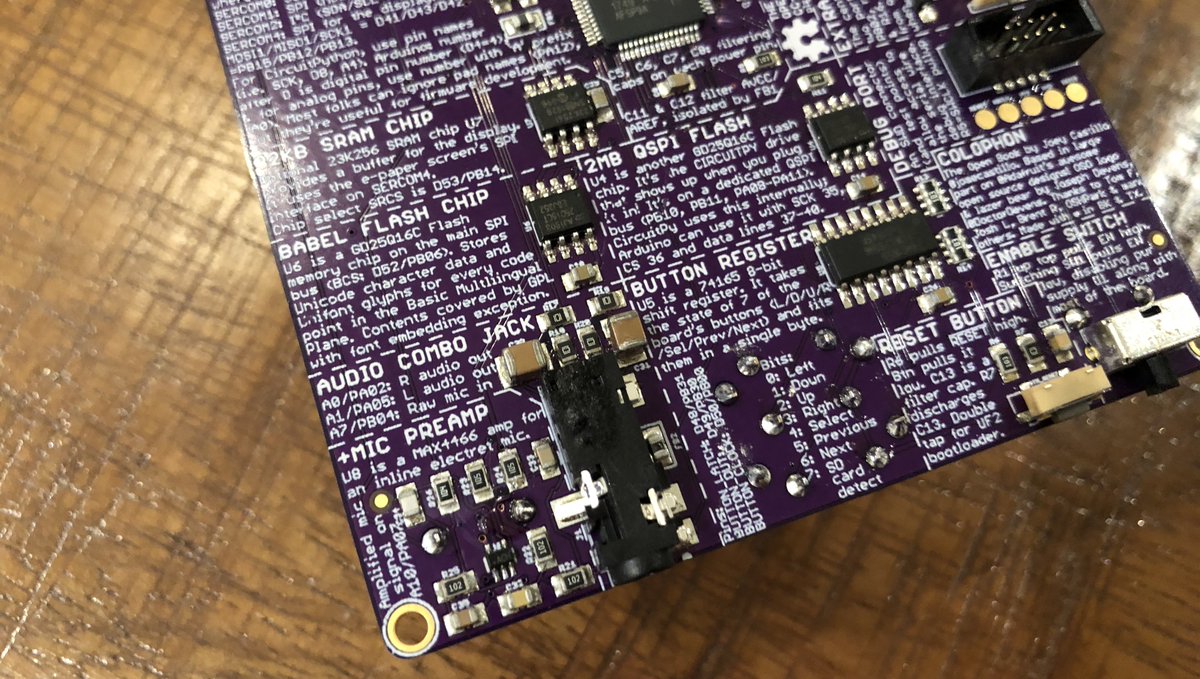
(original)
Replying to @adafruit
Same with the Neopixel indicator LED: surface mount, on the back, near the Feather header (which will be open in an enclosure). Not too useful for ebook reading, but I can see it being used as a backwards-facing light in some other type of application (e-ink picture frame?) (4/?)
(original)